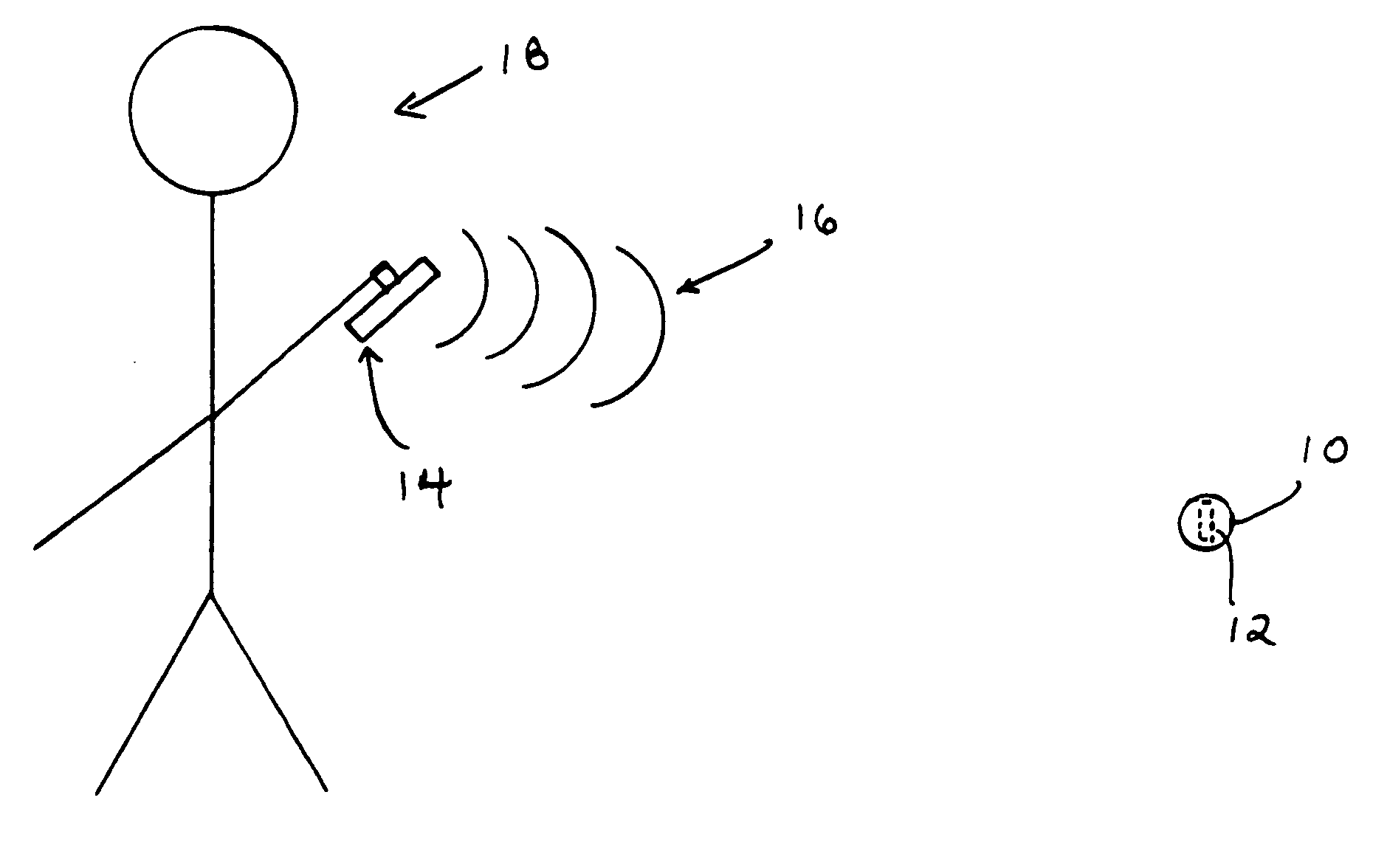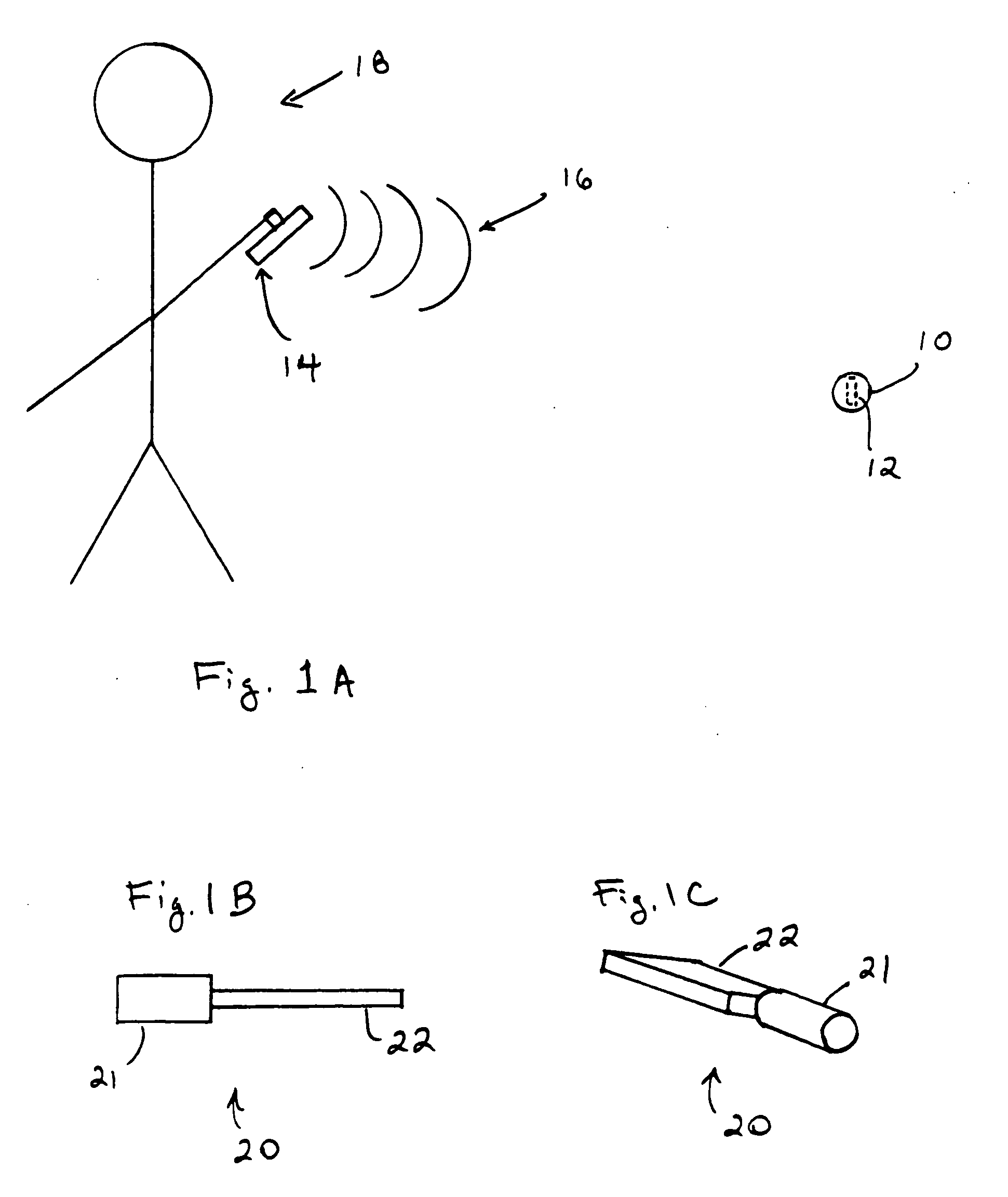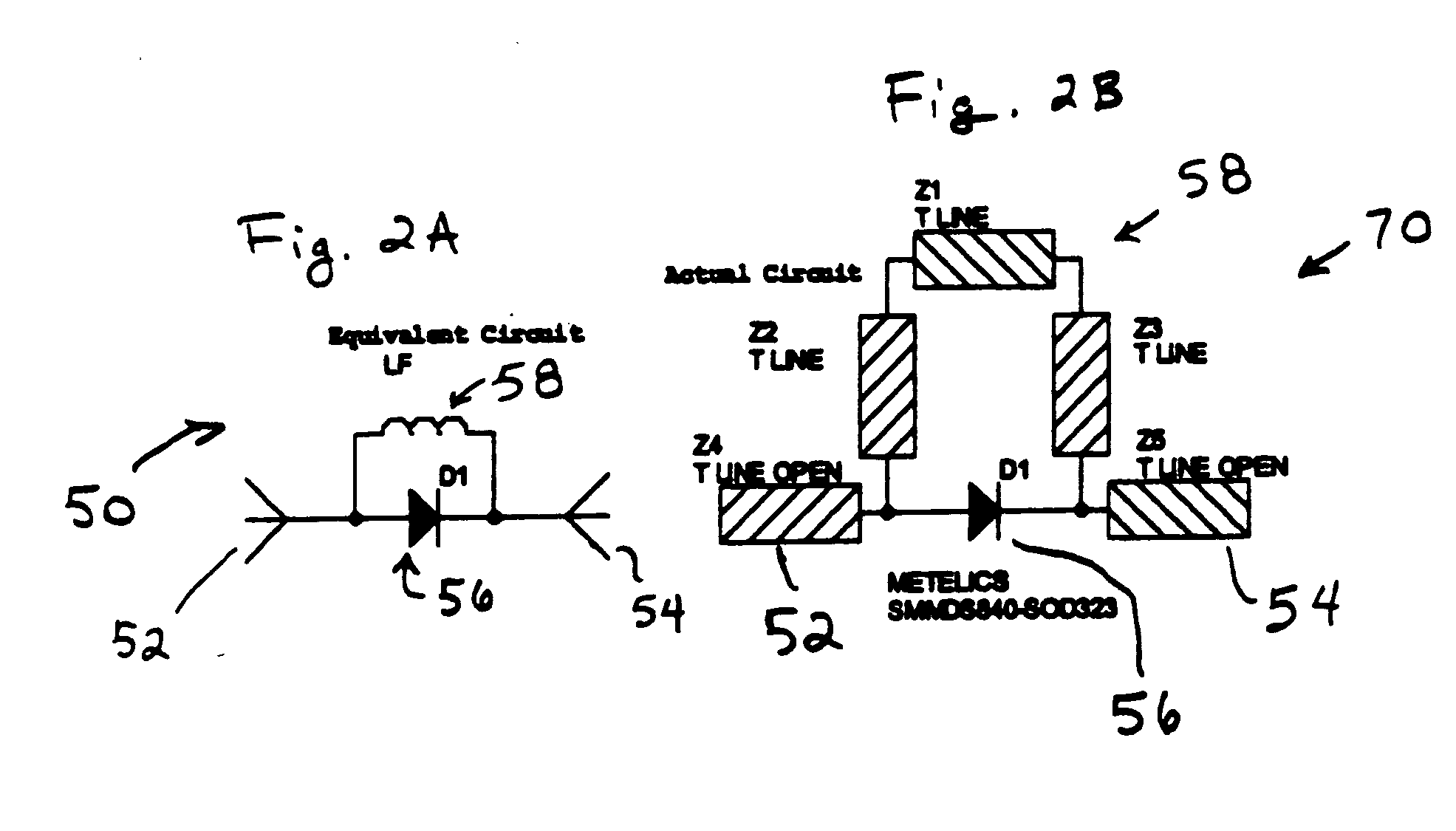Apparatuses, methods and systems relating to findable golf balls
a technology of golf balls and accessories, applied in the field of golf balls, can solve the problems of slowing down the game, reducing and increasing the cost of the game, so as to reduce the chance of a reception of an rf signal and be easily held
- Summary
- Abstract
- Description
- Claims
- Application Information
AI Technical Summary
Benefits of technology
Problems solved by technology
Method used
Image
Examples
Embodiment Construction
[0064] Various embodiments and aspects of the invention will be described with reference to details set below, and the accompanying drawings will illustrate the invention. The following description and drawings are illustrative of the invention and are not to be construed as limiting the invention. Numerous specific details such as sizes and weights and frequencies are described to provide a thorough understanding of various embodiments of the present invention. However, in certain instances, well-known or conventional details are not described in order to not unnecessarily obscure the present invention in detail.
[0065]FIG. 1A shows an example of the system which uses a handheld transmitter / receiver to find a findable golf ball. A person 18 such as a golfer, may carry a handheld transmitter / receiver which is designed to locate a findable golf ball 10 which includes a tag 12 embedded in the golf ball. The handheld transmitter / receiver 14 may operate as a radar system which emits an ...
PUM
 Login to View More
Login to View More Abstract
Description
Claims
Application Information
 Login to View More
Login to View More - R&D
- Intellectual Property
- Life Sciences
- Materials
- Tech Scout
- Unparalleled Data Quality
- Higher Quality Content
- 60% Fewer Hallucinations
Browse by: Latest US Patents, China's latest patents, Technical Efficacy Thesaurus, Application Domain, Technology Topic, Popular Technical Reports.
© 2025 PatSnap. All rights reserved.Legal|Privacy policy|Modern Slavery Act Transparency Statement|Sitemap|About US| Contact US: help@patsnap.com



